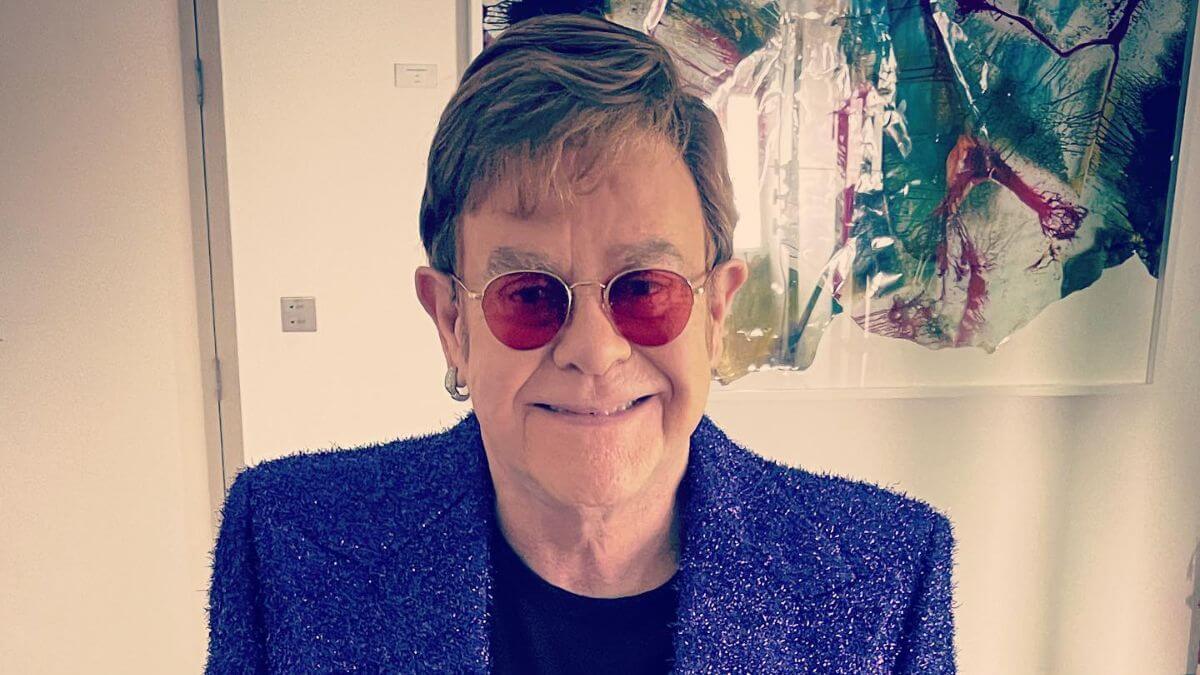From a full mane in the 1970s, through phases of hair loss and failed transplants, to sporting wigs and some hairpieces, the Elton John hair evolution not just mirrors his personal life but also the advancement of hair restoration techniques.
This editorial serves as an extensive timeline tracing the extraordinary changes in Elton John’s hair over his illustrious career. Through this piece, we’ll reflect upon the different styles.
1970 (Full Set of Hair)
Diving into Elton John’s hair journey, let’s start from the very beginning – the glorious 1970s.
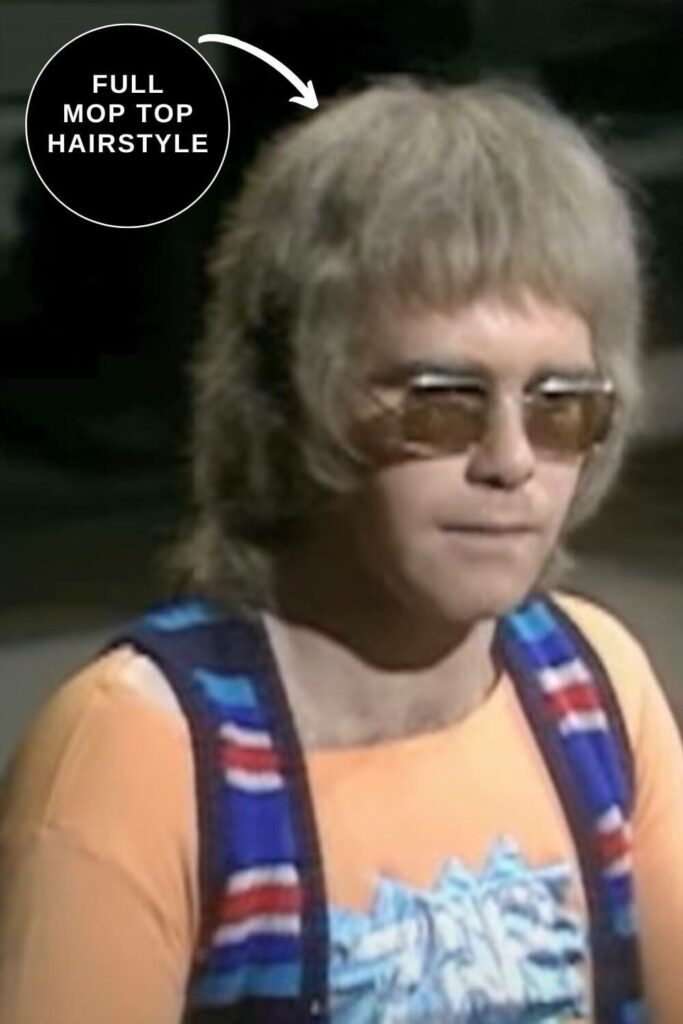
During this time, Elton sported a full set of hair synonymous with the wild and free spirit of the time.
A quintessential 70s look was the mop top, most remember this as the beatles haircut signature look!
This was the era when Elton was not only climbing the ladder of stardom but also grappling with his refined personality.
These were the early stages of his career, and his hair, no doubt, was as dynamic and versatile as his music. The full mane he wore, often in a messy uncombed style, reflected the energetic and rebellious nature of his character.
For many of his fans, he remains the endearing symbol of his rise to fame, struggles, and passion for music. Little did they know, his hair continued to narrate fascinating, rather complex stories in the next couple of decades.
1973 (Thinning Crown)
By 1973, there was a minor but noticeable change in Elton John’s hair.
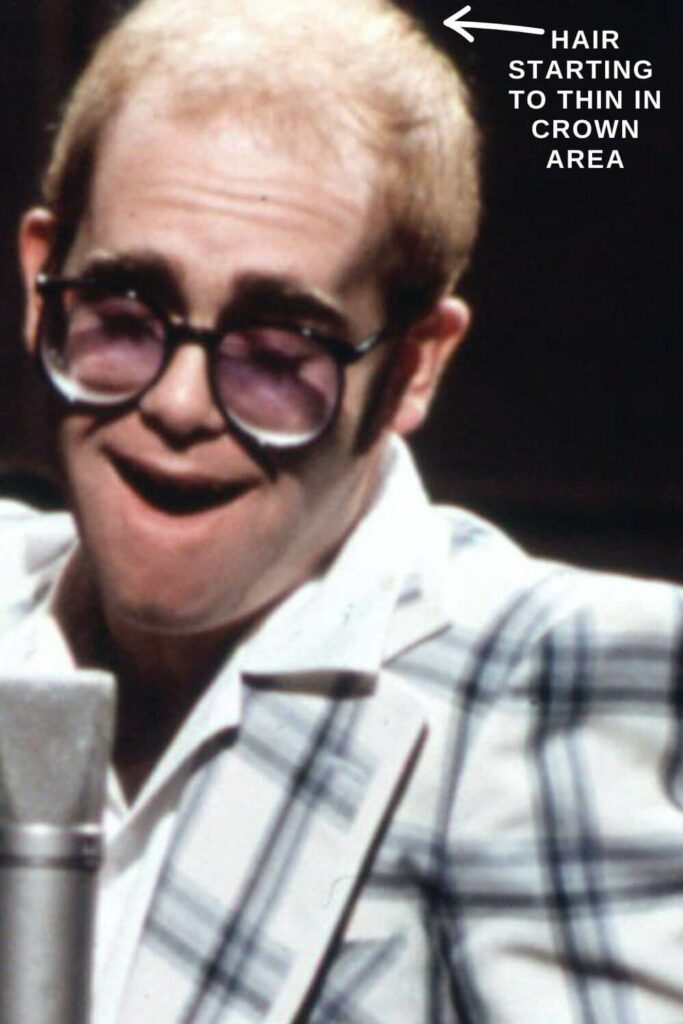
His previous lush, full mane of hair started showing signs of thinning, particularly around the crown. Though Still vibrant, the reduction in volume was signaling the onset battle that Elton would face – Hair Loss.
During this age, Elton John’s hair mirrors his vulnerabilities and humanity. He might have been a global superstar, but he wasn’t immune to the natural processes that affect us all. The Thinning crown was a sharp contrast to the previous thin mane, yet Elton continued to embrace it with grace and confidence.
The loss in hair density did little to alter his style. If anything, it added another layer of authenticity to his personality. He was still the same Elton – Flamboyant, passionate, and unapologetic. These changes in hair merely reflected the evolution of his journey, both personally and even professionally.
As the thinning increased, Elton began to explore different hairstyles that subtly masked the receding hairline without compromising his flamboyant style. He explored adversity while dealing with his own personal problems.
1977 (Bald Middle)
As the years rolled on, his hair loss became more prominent.

By 1977, the gradual thinning was converted to a prominent bald patch in the middle of his scalp.
It was a significant change from full head to hair he had flaunted in the early years of his career. Yet, Elton wore it with great resistance, refusing to let it define him.
Despite the bald patch, his ability to attract the audience remained the same. His magnetic charisma and dynamic performances served as a reminder that physical appearance couldn’t eclipse the new talent.
The Bald Middle wasn’t a setback for Elton but rather a testament to his perseverance, as he continued to inspire through his music and his character.
Elton embraced his baldness and incorporated it into his iconic style. He experimented with multiple different hats and headpieces that were as expressive as a man himself.
But in true Elton John fashion, he turned his baldness into a fashion statement, further commenting on his status as a style tycoon.
As Elton’s hair loss advanced, so did his quest for solutions. He marked his first foray into the hair restoration technique, albeit with limited success.
But in Elton’s life, every setback was a stepping stone on his journey to self-acceptance. His spirits remained as indomitable as ever, paving the way for more explorations in the world of hair restoration.
1982 (Hair Transplant)
As the 80s hit, He took an active approach to his hair loss by stepping into the world of hair transplants.
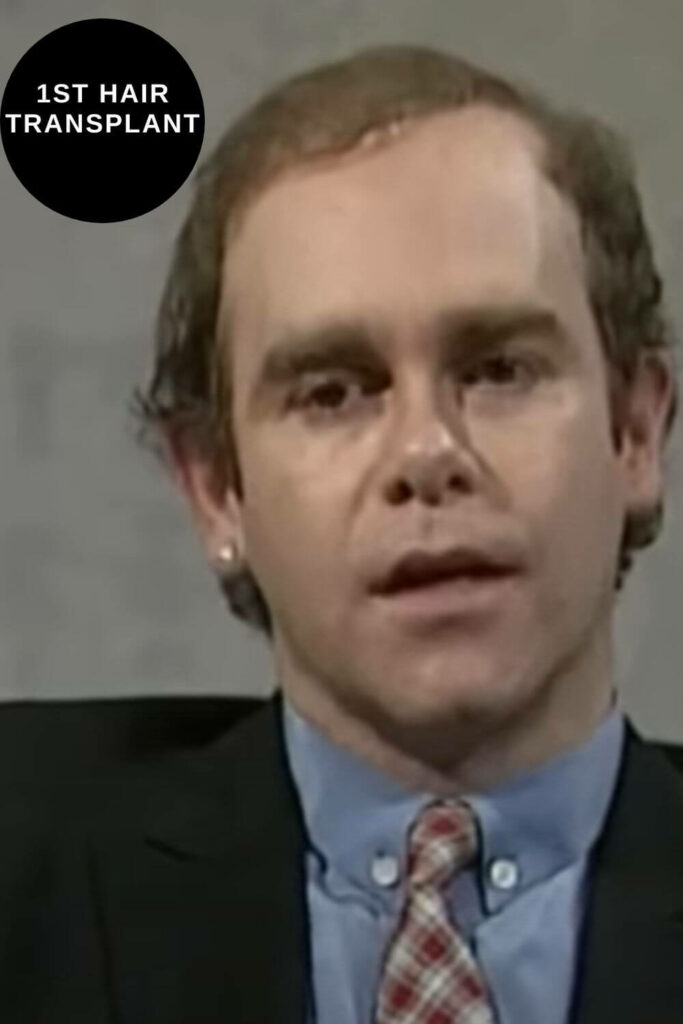
In 1982, Elton John underwent his first hair transplant procedure. This technique involved surgically moving the hair from the areas where it still grew to the bald part of the head. It was a brave decision, as hair transplantation was still new and evolving during this era.
Although he was waiting for a good result, the outcomes were not as promising as he had hoped. Despite the initial signs of success, the transplants failed to deliver lasting results. Later on, he again attempted the same procedure but had the same results this time too. The new hair didn’t take hold as expected, leading to further disappointment.
It was a challenging phase in Elton’s journey with hair loss, highlighting the struggles many men face when dealing with this issue. Nevertheless, the failure of his transplants didn’t dampen Elton’s spirit. He didn’t stop there; he continued to search for ways to handle his hair loss, leading him to explore different solutions like hair pieces and wigs.
That period was characterized by Elton’s unwavering commitment to embracing change and adapting his circumstances without affecting the true essence of his indomitable spirit.
This chapter in Elton’s hair journey also gives us an insight into the evolution of hair transplantation. The failures he faced were actually the challenges of the hair transplant industry in the early ages, which have since been overcome with advancements in technology and technique.
Elton’s hair in the 90s (Hair Pieces and Wigs)
The 1990s were a transformative period for Elton Jogn, not just in his musical career but also in his hair journey.
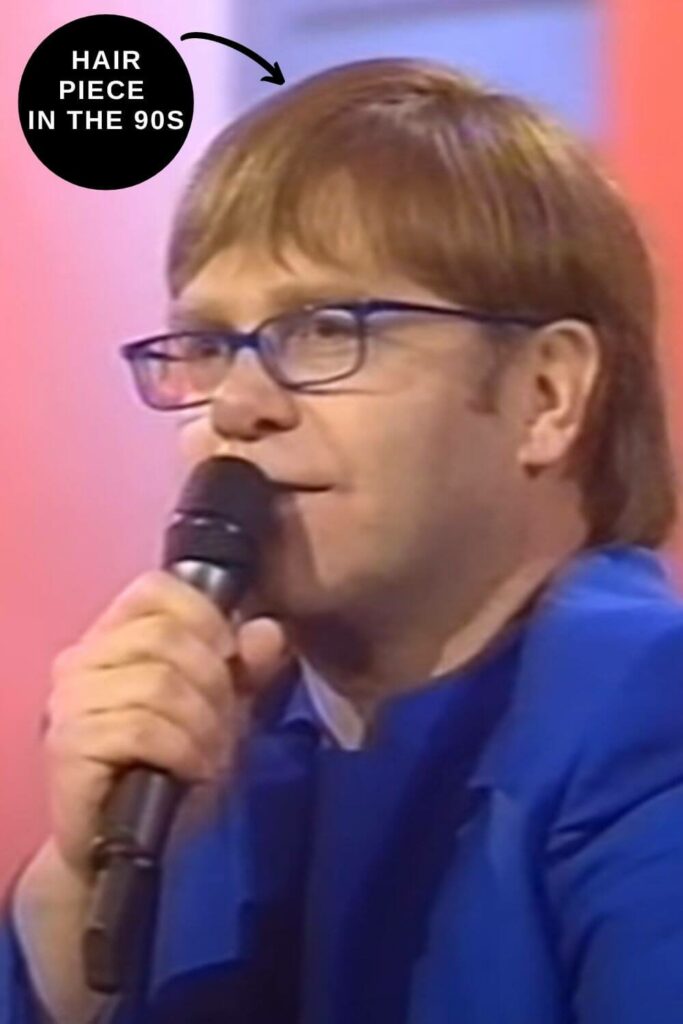
Having experienced the disappointment of failed hair transplants in the previous couple of decades, Elton turned to a less invasive and more instantly solution: Hair pieces and wigs.
Elton was seen sporting a variety of hairpieces throughout the 90s, adding to his already theatrical persona.
These accessories allowed him to change his look according to his mood and the demands of his performances. From blond curls to brown shades, Elton’s hair pieces were now part of his iconic personality.
This approach served a dual purpose. It allowed him to present himself to the world on his own terms by controlling his appearance. Plus, he brought the silent subject into the public eye, subtly raising awareness and sparking conversations.
While what use of hair pieces and wigs is a form of concealment or denial in some people’s perspective, for Elton, it was a way of embracing his hair loss journey with creativity and flair.
It reminds us that hair loss need not be a source of embarrassment or insecurity but rather an opportunity to redefine your identity.
Elton John Hair Today
Fast forward to today, and Elton John’s hair has remained a topic of fascination and admiration.

A cry from sparse hair in the 70s and 80s, he now flaunts a full head of hair that seems to defy time and genetics.
Elton’s hair today results from several more successful hair transplants, an improved understanding of hair loss, and advancements in hair restoration technology. Modern hair transplant techniques are less invasive, more effective, and yield more natural-looking results.
Beyond the physical transformation, Elton’s hair today represents a triumph over personal adversity. It’s a testament to the willingness to challenge societal norms about hair loss and aging. It also serves as a beacon of hope for other people struggling with hair loss.
Why Do Some Men Lose Their Hair?
Hair loss in main, medically known as androgenetic alopecia or, more commonly, male pattern baldness, is a complex issue with deep genetic roots. Around 50% of men will have experienced hair loss in their 50s, just like Elton did.
This happens due to the effect of dihydrotestosterone (DHT), a potent form of testosterone, on the hair follicles.
How Hair Transplantation Evolved Since The 1970s To Today?
Hair transplantation, just like our understanding of hair loss, has been evolving since the 1970s. In its early stages, the procedure was far away from perfect. The use of “plugs” often resulted in an unnatural doll-like hair appearance.
Later in the 80s and 90s, minigrafts and micrografts were introduced to make the process more efficient. However, in the early 2000s, Follicular Unit Transplantation (FUT) and Follicular Unit Extraction (FUE) revolutionized the hair transplant game.
These techniques allowed the transplantation of individual hair follicles, resulting in far more natural hairline and density.
Frequently Asked Questions (FAQs)
When did he start to experience hair loss?
Elton John started experiencing hair loss in his early twenties, around the 1970s. It became more noticeable as his career progressed.
Why did Elton John suffer from increased hair loss?
While the specific reason isn’t publicly available, hair loss often results from a combination of genetics, hormonal changes, and age. It’s also worth noting that stress, a common factor in the lives of global superstars like Elton, can exacerbate hair loss.
The Final Words
And so, through high and low, thick and thin, Elton John’s hair journey is a fascinating spectacle. More than just style changes, it reflects the evolution of hair transplantation and restoration technologies over the past few decades.
This journey not only maps out Elton’s iconic career but also resonates with countless others experiencing similar hair struggles. Through it all, Elton has always remained uniquely Elton, proving that style goes far beyond what is on top of our hards.
More from Heartafact
If you enjoyed our editorial on the Elton John Hair evolution you may also like the following

